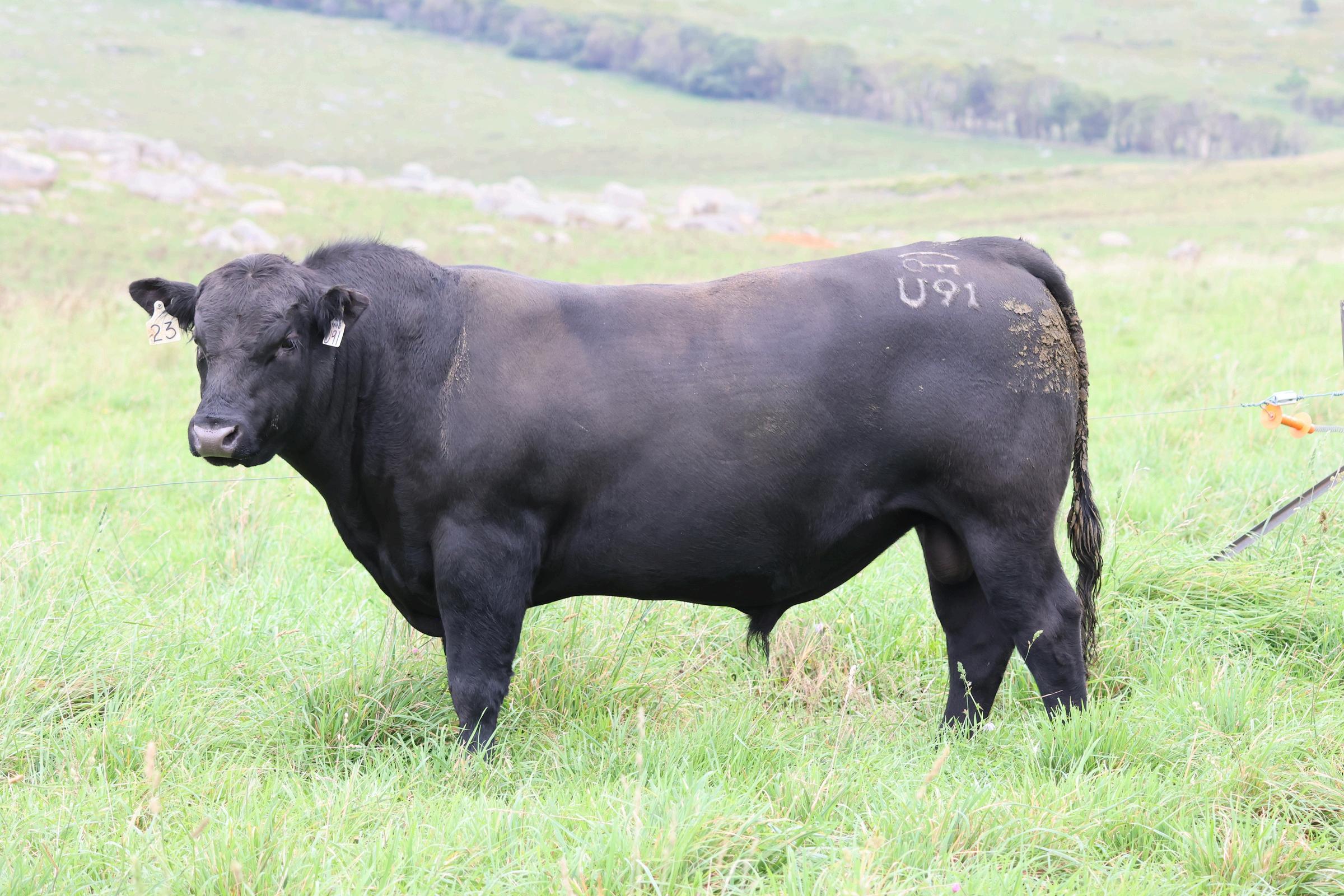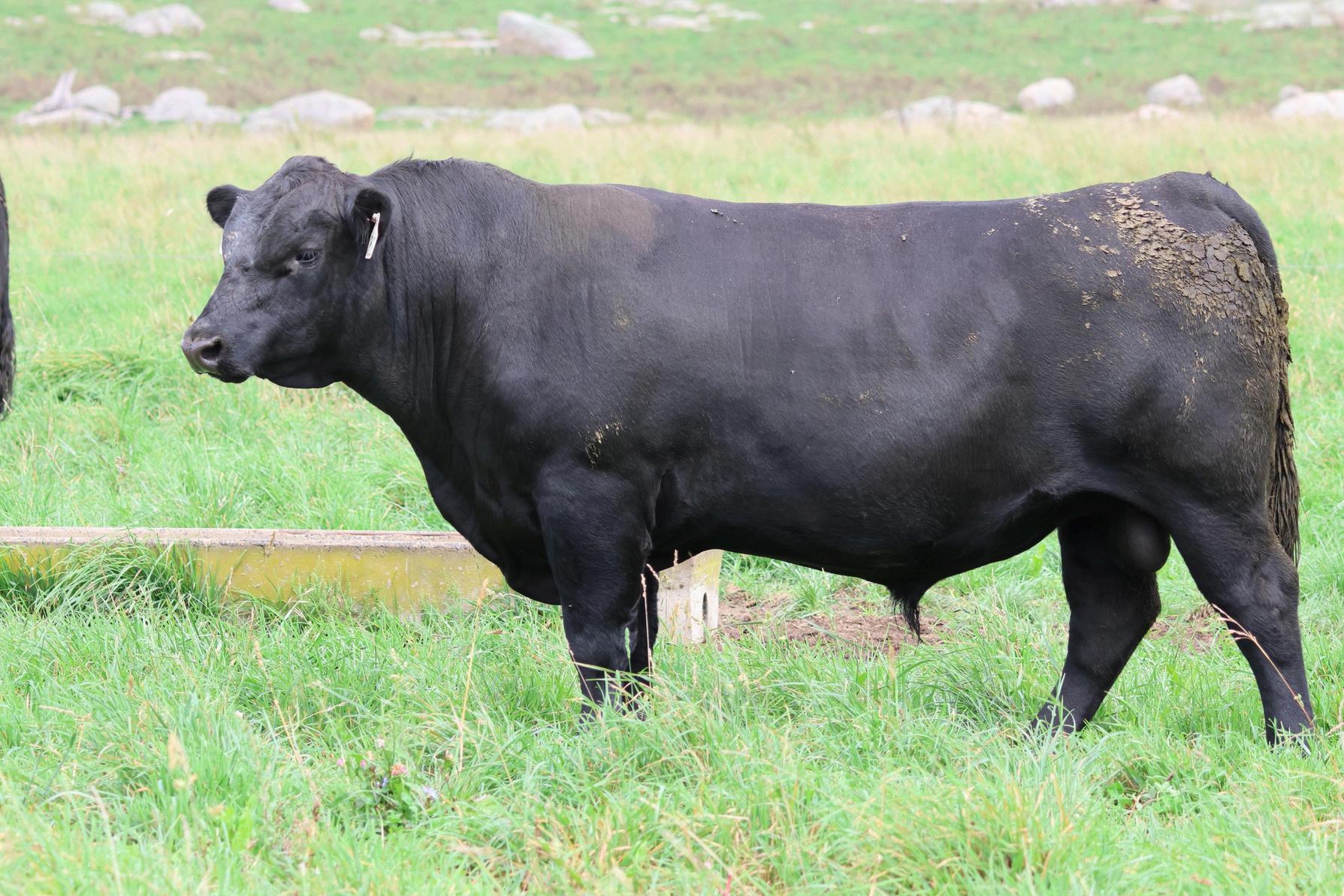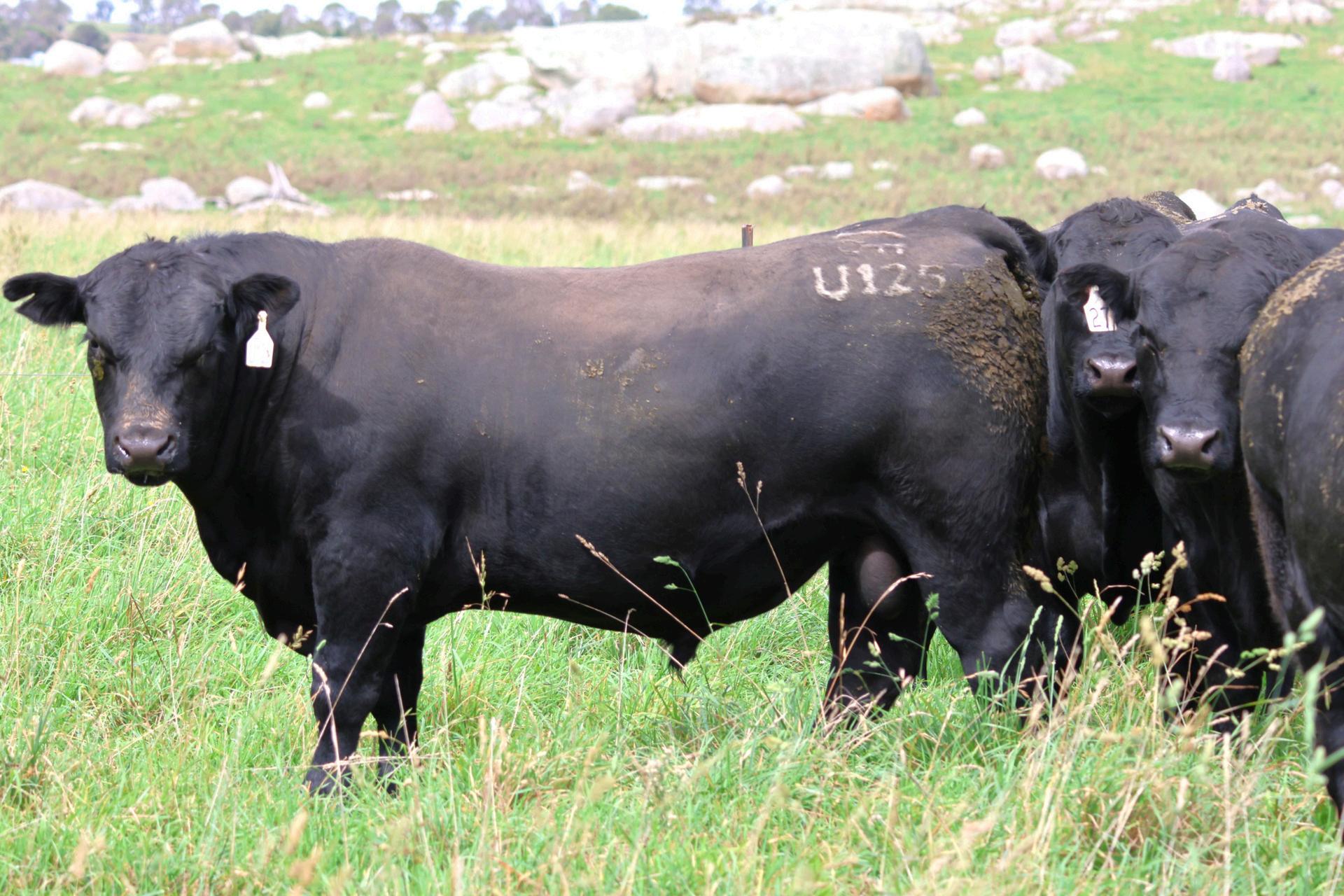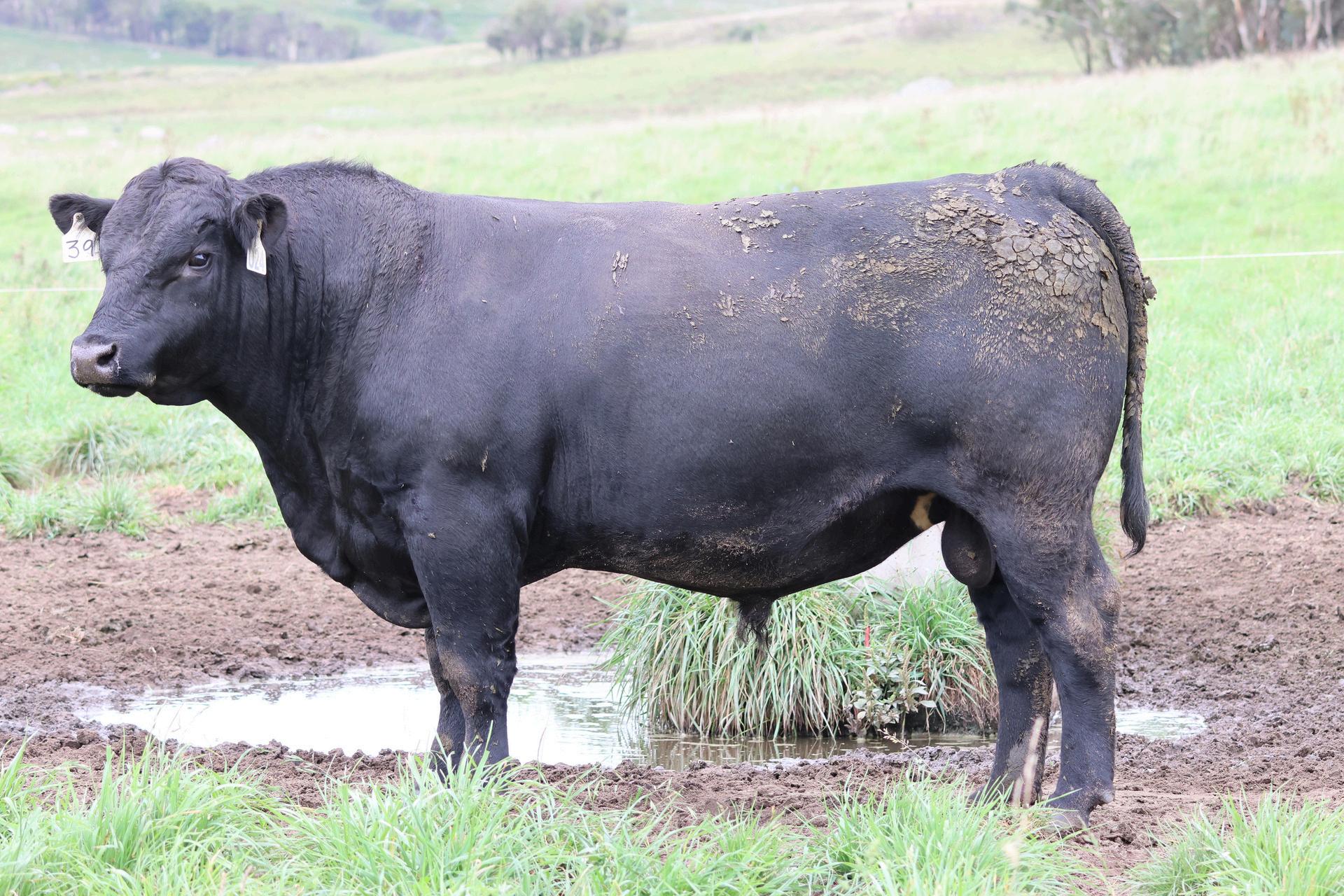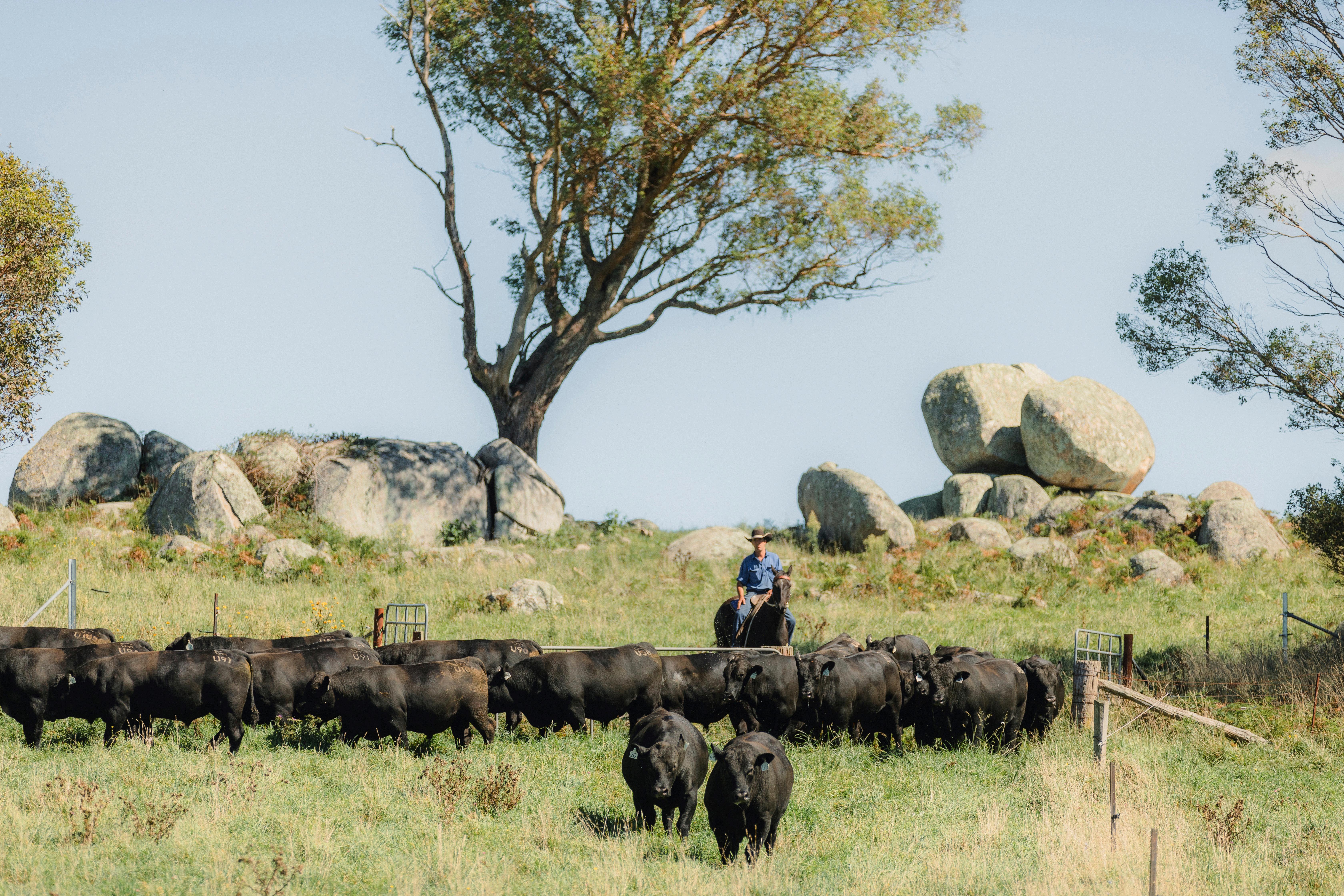
























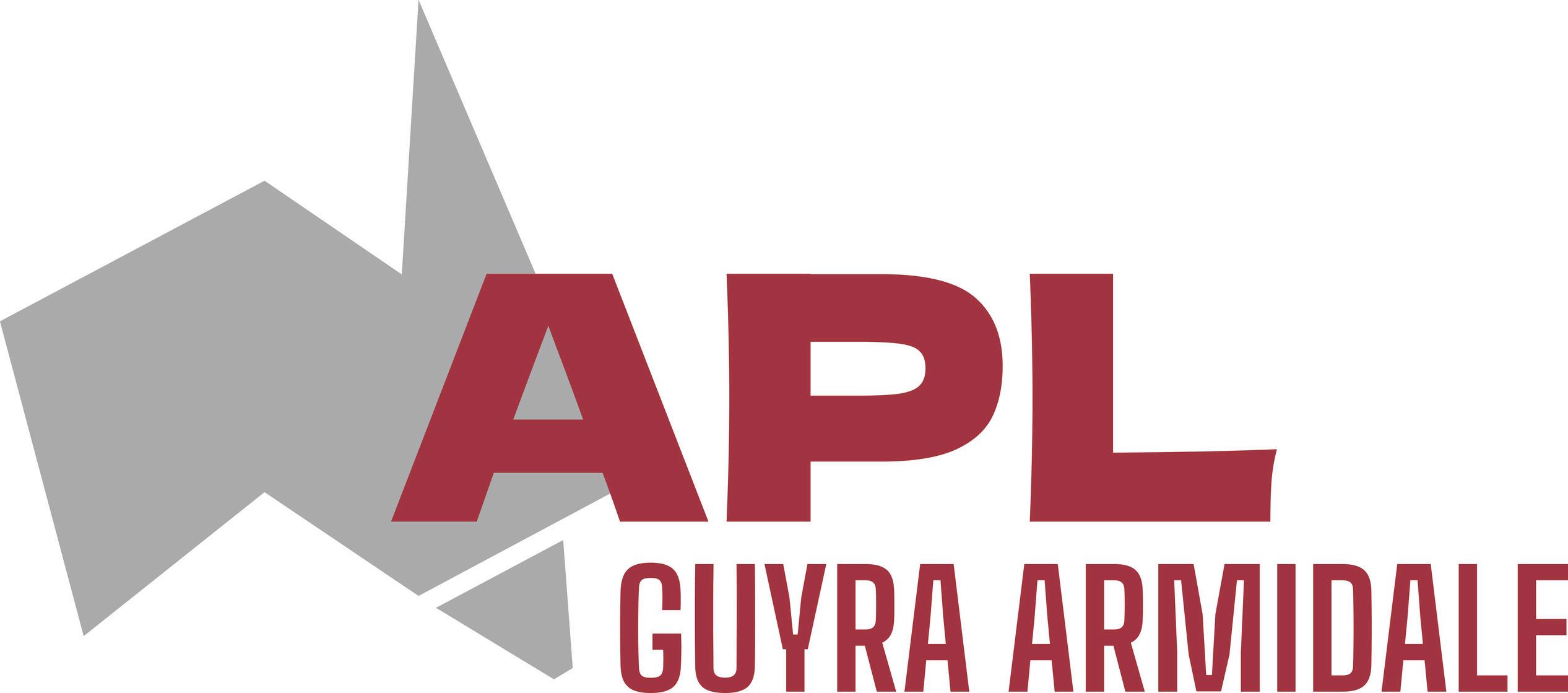
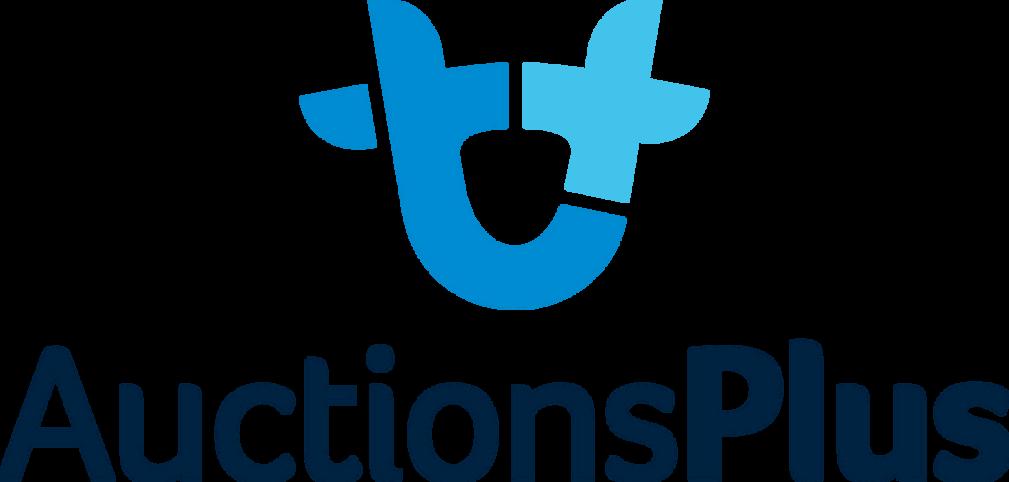
Hello,
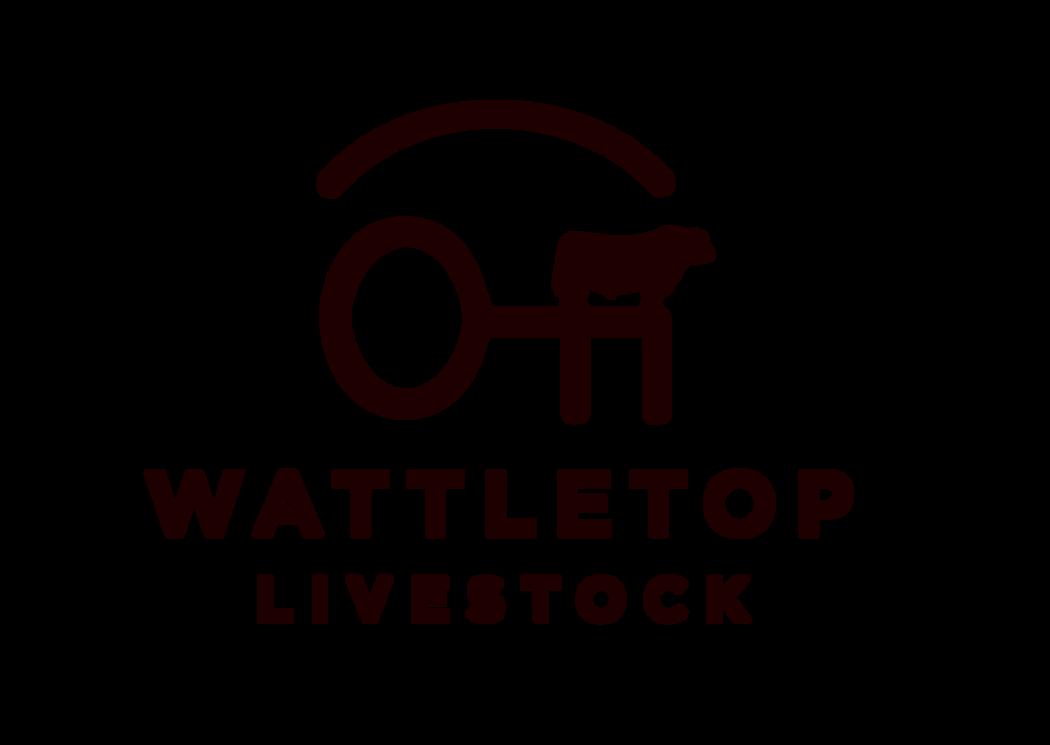
As we write the welcome letter for this year’s catalogue, there is no shortage of drama happening across the country and the globe in regards to seasonal and market conditions. It is hard to fathom the extremes in weather conditions with the South of Australia crippled by drought and the devastation the farmers in South West Queensland are facing in stock losses and property damage from record breaking floods. The anticipated growth of feed in Queensland will certainly have a positive impact on the restocker market which will be further amplified when there is rain in the south.
The Australian beef industry has been waiting patiently for an increase in demand from the US as they rebuild their cow herds after a lengthy drought. We attended the feeder steer school in Armidale in February where there was talk of a huge shortfall of domestic beef production in the US this year providing opportunities for other countries to supply this gap.
Just to make things a little more interesting Trump is shaking up global markets with his “Liberation Day” tariffs. It is too early to see the fall out from this but Australia has fared better than other countries like major competitor Brazil which now faces a 36.4% tariff on their beef exports to the US (Beef central 2025). It has been a good sign to see cow grids over $6/kg cwt and Angus Feeder prices around the $4 mark at the moment. Markets and seasons aside, our commitment to producing cattle that are fertile, quiet, fast

The new sire lines presented in this year’s line up include Knowla So Right and Dunoon Recharge So Right has worked well over our bigger cows to add thickness and muscle and the Recharge sons are smooth shouldered and long bodied.There are some more full ET brothers to the L519 sons we sold last year that were popular and made $3,000 above our sale average The Exclusive and Plantation sons are thick and consistent with the Plantation sons offering plenty of IMF
We have enjoyed getting around to visit some of our client’s farms and seeing the progeny of our bulls It pleases us to receive feedback on their quiet temperaments and doing ability, handling a range of environments. We always go home with fresh ideas from something they are doing slightly differently on their farms
On a personal note, the last 12 months haven’t been the easiest for us as a family with Jess diagnosed with breast cancer in July last year The thankyou list is huge to all the people that have reached out with kind words, had kids for sleepovers, taken Jess to chemo and offered meals but we would like to name a few
A huge thanks to Jess’ sister Eliza who uprooted her life in Tasmania for 4 months while Jess was having chemo Jess’s sister in law Liz for helping her navigate the medical system and always offering support To our assistant manager Sam Townsend you have stepped right up taking on a huge amount of responsibility with the day to day running of the farm as well as managing development projects including the new yard build We are lucky to have someone who cares about our operation as much as you do To Sam’s dad Jason Townsend who helped through all of October feeding cattle, marking calves and AI. To our agents at APL for offering Archi’s services through the busy times To Mitch and Anna Hoy for helping with the yards and Anna in the office
We look forward to welcoming you to our open day on Tuesday the 20 of May If you can’t make it on the 20 please get in touch if you’d like to see the bulls on another day th th
Kind Regards, Henry, Jess, Sadie and Oscar
MacDougall
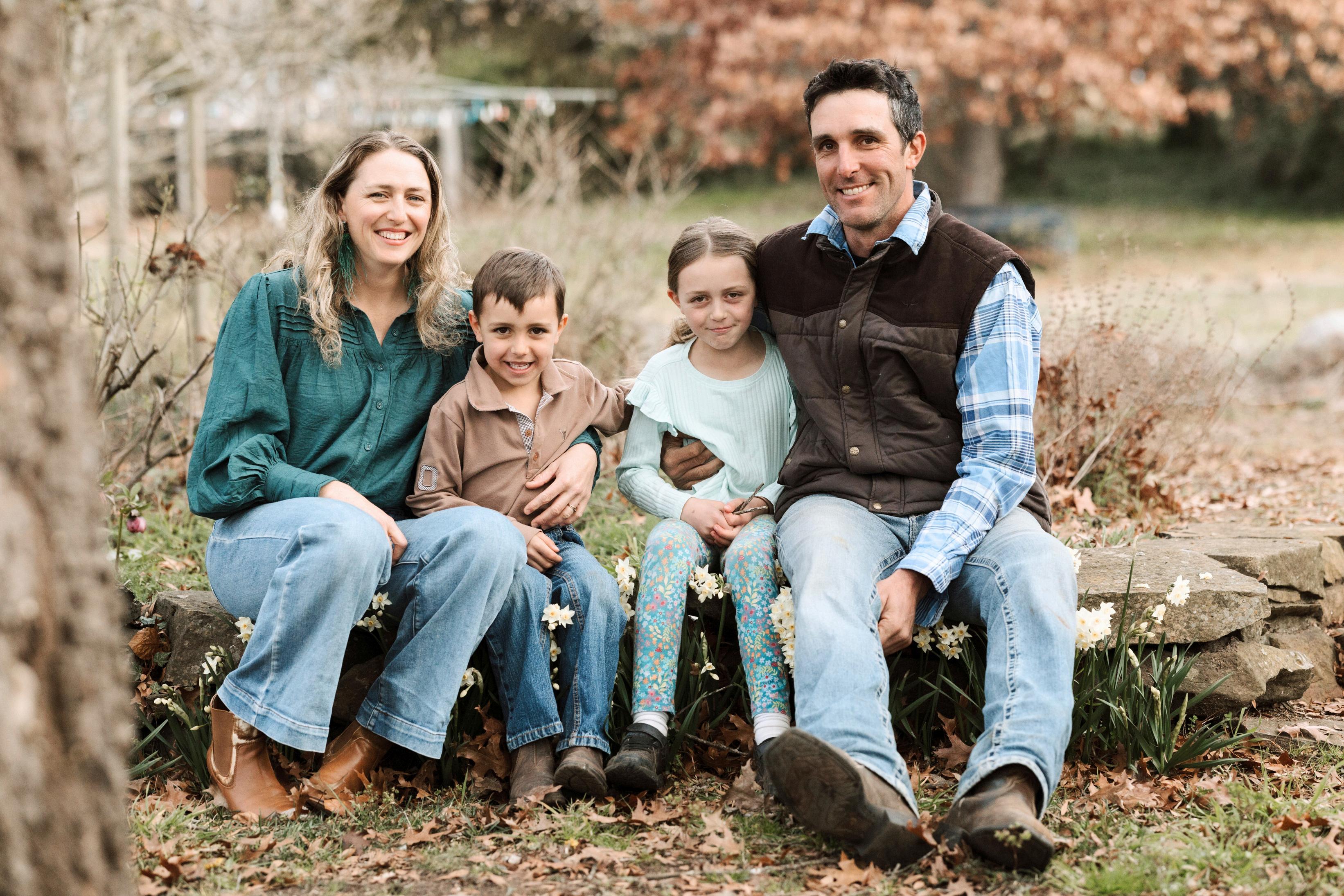

Wattletop is located 18kms east of Guyra on the Guyra-Ebor Rd on the left.
Road address is: 5814 Guyra Rd Guyra
Complimentary morning tea and a BBQ lunch catered for by Bald Blair Public School.
Visitors enter the pens at their own risk.
Children under 16 years are not permitted to enter the pens
All sale bulls have been assessed for temperament and are quiet to handle under normal circumstances. Having a crowd of people around them places them under pressure and even the quietest bull can be unpredictable. Please don't congregate in pens and be aware of bulls fighting.
All sale lots will be transferred to their new owners 60 days after of the sale.
The Wattletop Livestock herd is a J-BAS 7
Bulls can be insured through our WFI Insurance representative David Di Feranti by calling 0412 328 911 or your preferred insurance agency.
We recommend that purchasers insure their bulls.
All bulls have had the following treatments which fall in line with the Immune Ready guidelines. All bulls have ear notch tested negativeagainstPestivirus.
Date last treated Vaccine treatments Annual Booster required?
10/03/2025 7 in 1 Yes
10/03/2025 Pestiguard Yes
10/03/2025 Vibriovax Yes
10/03/2025 Selovin LA As required
26/03/2025 Nitromec As required
24/09/2024 BEF 3 Day As required
28/06/2024 Tick fever No
20/02/2024 Rhinoguard No
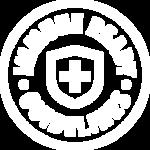

The bulls catalogued for this sale have been inspected and assessed on the IBMS Type/Structure system, by Dick Whale at least twice in their life. They were all considered acceptable for structural soundness and muscling. If any potential buyers wish to discuss any of the bulls prior to the sale, please contact Dick on (0427 697968), or talk to him at our open day.
Feet
Pastern Angle
Leg Angle
Evaluation of front and rear feet, with 25 being ideal. Scores lower than 25 exhibit some scissor claw in the feet. Scores greater than 25 are open clawed.
Evaluation of strength of pastern, depth of heel and length of foot, with 25 ideal. Scores greater than 25 tend towards having deeper heels, less than 25 towards having shallow heels.
Evaluation of rear leg set with 25 being ideal. Scores greater than 25 tend towards being sickle hocked, less than 25 post legged.
A score of 25 is ideal.
A score of 23, 24 or 26 and 27 shows slight variation from ideal, but includes most sound animals. A score of 22 or 28 shows greater variation but would be acceptable in most commercial programs. However, seedstock producers should be vigilant and understand that this score indicates greater variation from ideal.
A score of 21 or 29 are low scoring animals and should be looked at cautiously and inspected very closely before purchasing.
A score of 20 or 30 should not be catalogued and are considered immediate culls.
Stature
Capacity
Body Length
Muscle Score
Doabililty
Evaluation of bulls for maturity pattern and frame size. A stature score of 25 is average. This score may be influenced by age of dam, nutrition, etc. Scores greater than 25 are generally larger framed, later maturing cattle.
Evaluation combines the depth of rib, spring of rib, and chest floor width. Scores greater than 35 indicate bulls with greater capacity.
Evaluation of body length from point of shoulder to pin bone. Scores greater than 25 indicate longer body length.
Is the muscularity of the bull devoid of subcutaneous fat. Higher scores indicate animals with higher yield attributes.
Scores : 25 = C- muscle 30 = C 35 = C+ 40 = B- 45 = B 50 = B+
Is the ability of an animal to deposit fat in the fat depots of the body, relative to their peers under a common management regime. The higher doability cattle are easier doing.
Sheath score - 5 is a bull with a tight sheath. -1 is a bull with a very pendulous sheath.
Grade 1 = Cull, 2 = Just, 3 = Below Average, 4 = Average, 5 = Above Average, 6 & Higher =
Capacity
Feet & pasterns
STATURE
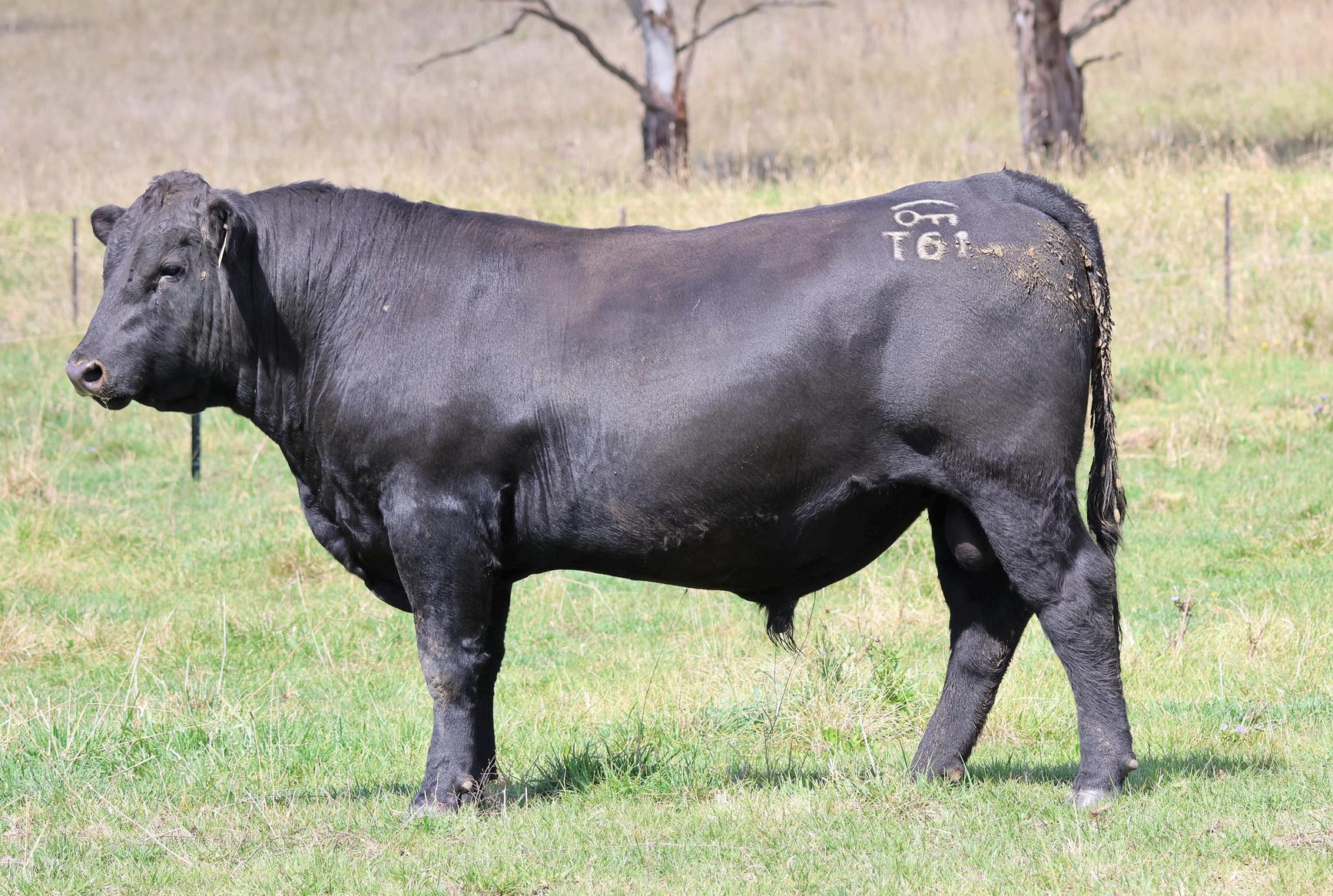
Muscling
Stature
Scrotal
Sheath
Rear leg set
CAPACITY
Evaluation of an animal's frame size, based on visual assessment of the animal's hip height
BODY LENGTH
FRONT
FEET
HIND FEET
REAR LEG SET
Evaluation of an animal by visual assessment combining depth of fore rib along with spring of rib and width of chest floor as well as depth of flank.
The greater the score, the greater the animal's capacity
Evaluation by visual assessment of an animal's length from wither to pins
The greater the score, the greater the body length
Evaluation by visual assessment of an animal's front feet structure
Tending scissor claws,
Ideal
Evaluation by visual assessment of an animal's hind feet structure
Tending scissor claws,
Evaluation by visual assessment of an animal's rear leg angle
Ideal
Tending open claws,
Tending open claws,
Tending post legged,
Ideal
Evaluation by visual assessment of an animal's length and strength of heel
Tending sickle hocked, FEET & PASTERNS
MUSCLING
Shallow heel
Ideal
Deep heel
Evaluation by visual assessment of an animal's combined width of rump and hindquarter, with secondary consideration given to forearm muscling
SHEATH
Evaluation the tightness of the sheath of the bull
All bulls have passed a fertility test conducted by Nathan Kruidenier, Bovine Breeders Kentucky includingExamination for structural soundness, examination of reproductive organs, measurement of scrotal circumference (which is the measurement shown in the catalogue) and checked for semen motility and morphology.
Sperm cells need to be motile as they have a way to travel to get the job done. A sample is collected and a drop is placed on a microscope slide and examined "crush side" to assess the percentage of sperm cells moving forward and to assess the concentration level and pick up any infection in the semen that needs treating. We recommend motility testing your bulls each year before joining to ensure their semen quality is satisfactory for joining.
Morphology is the anatomy or structure of the sperm. It cannot be tested "crush side", requiring a large specialised microscope to examine a preserved semen sample, assessing the % normal and % abnormal sperm cells. It can pick up defects in the sperm that "crush side" testing cannot. The most serious of these defects can see the sperm start to fertilise an egg but fail to result in a viable embryo and the female will fail to fall in calf. Note that semen morphology can differ in subsequent samples of the same bull. Stress can cause this and the process of open days, bull sales and being trucked to a new environment will generally cause some stress.
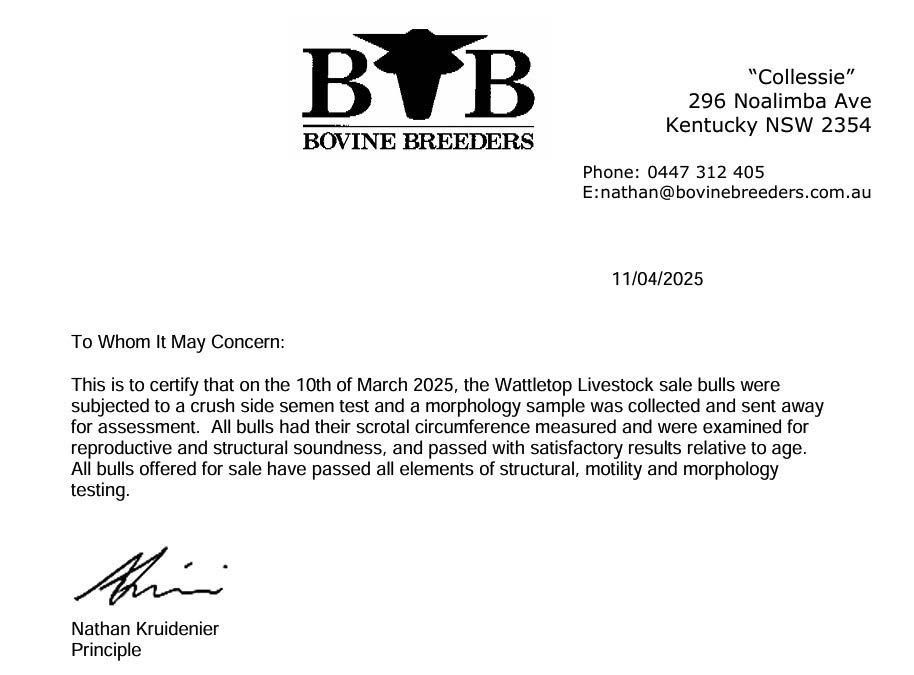
In the unlikely event of infertility, provided it is not caused by injury, stress or disease contracted after our sale, we will endevour to supply a satisfactory replacement if available or issue with a credit equal to the purchase price minus the salvage value which may be used at future Wattletop Livestock Bull sales. This guarentee stands for 12 months after the bull sale.
Animal details included in this catalogue, including but not limited to pedigree, DNA information, Estimated Breeding Values (EBVs) and Index values, are based on information provided by the breeder or owner of the animal. Whilst all reasonable care has been taken to ensure that the information provided in this catalogue was correct at the time of publication, Angus Australia will assume no responsibility for the accuracy or completeness of the information, nor for the outcome (including consequential loss) of any action taken based on this information.
The animals listed within this catalogue including its pedigree, are displaying a Parent Verification Suffix which indicates the DNA parent verification status that has been conducted on the animal. The Parent Verification Suffixes that will appear at the end of each animal’s name.
The suffix displayed at the end of each animal’s name indicates the DNA parentage verification that has been conducted by Angus Australia.
PV : both parents have been verified by DNA.
SV : the sire has been verified by DNA.
DV : the dam has been verified by DNA.
# : DNA verification has not been conducted.
E : DNA verification has identified that the sire and/or dam may possibly be incorrect, but this cannot be confirmed conclusively.
In order for Angus Australia to process the transfer of a registered animal in this catalogue, the vendor will need to provide certain information to Angus Australia and the buyer consents to the collection and disclosure of that information by Angus Australia in certain circumstances. If the buyer does not wish for his or her information to be stored and disclosed by Angus Australia, the buyer must complete the form included below and forward it to Angus Australia. If the form is not completed, the buyer will be taken to have consented to the disclosure of such information.
If you do not complete this form, you will be taken to have consented to Angus Australia using your name, address and phone number for the purposes of effecting a change of registration of the animal(s) that you have purchased, maintaining its database and disclosing that information to its members on its website.
I, the buyer of animals with the following
from member………………………………………………………………............................................................(name) do not consent to Angus Australia using my name, address and phone number for the purposes of effecting a change of registration of the animals I have mentioned above that I have purchased, maintaining its database and disclosing that information to its members on its website.
Name: ……………………………………………………………………........................... Signature:
Date: …………………………….........
Please forward this completed consent form to Angus Australia, 86 Glen Innes Road, Armidale NSW 2350.
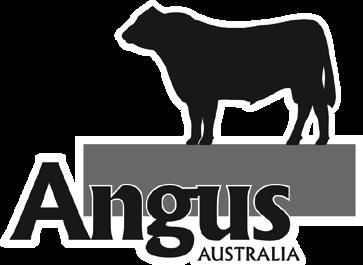
If you have any questions or queries regarding any of the above, please contact Angus Australia on (02) 6773 4600 or email office@angusaustralia.com.au
The TransTasman Angus Cattle Evaluation is the genetic evaluation program adopted by Angus Australia for Angus and Angus influenced beef cattle. The TransTasman Angus Cattle Evaluation uses Best Linear Unbiased Prediction (BLUP) technology to produce Estimated Breeding Values (EBVs) of recorded cattle for a range of important production traits (e.g. weight, carcase, fertility).
The TransTasman Angus Cattle Evaluation is an international genetic evaluation and includes pedigree, performance and genomic information from the Angus Australia and Angus New Zealand databases, along with selected information from the American and Canadian Angus Associations.
The TransTasman Angus Cattle Evaluation utilises a range of genetic evaluation software, including the internationally recognised BLUPF90 family of programs, and BREEDPLAN® beef genetic evaluation analytical software, as developed by the Animal Genetics and Breeding Unit (AGBU), a joint institute of NSW Agriculture and the University of New England, and Meat and Livestock Australia Limited (MLA).
An animal’s breeding value can be defined as its genetic merit for each trait. While it is not possible to determine an animal’s true breeding value, it is possible to estimate it. These estimates of an animal’s true breeding value are called EBVs (Estimated Breeding Values).
EBVs are expressed as the difference between an individual animal’s genetics and a historical genetic level (i.e. group of animals) within the TACE genetic evaluation, and are reported in the units in which the measurements are taken.
TACE EBVs can be used to estimate the expected difference in the genetics of two animals, with the expected difference equating to half the difference in the EBVs of the animals, all other things being equal (e.g. they are joined to the same animal/s).
For example, a bull with a 200 Day Growth EBV of +60 would be expected to produce progeny that are, on average, 10 kg heavier at 200 days of age than a bull with a 200 Day Growth EBV of +40 kg (i.e. 20
kg difference between the sire’s EBVs, then halved as the sire only contributes half the genetics).
Or similarly, a bull with an IMF EBV of +3.0 would be expected to produce progeny with on average, 1% more intramuscular fat in a 400 kg carcase than a bull with a IMF EBV of +1.0 (i.e. 2% difference between the sire’s EBVs, then halved as the sire only contributes half the genetics).
EBVs can also be used to benchmark an animal’s genetics relative to the genetics of other Angus or Angus infused animals recorded with Angus Australia.
To benchmark an animal’s genetics relative to other Angus animals, an animal’s EBV can be compared to the EBV reference tables, which provide:
•the breed average EBV
•the percentile bands table
The current breed average EBV is listed on the bottom of each page in this publication, while the current EBV reference tables are included at the end of these introductory notes.
For easy reference, the percentile band in which an animal’s EBV ranks is also published in association with the EBV.
An accuracy value is published with each EBV, and is usually displayed as a percentage value immediately below the EBV. The accuracy value provides an indication of the reliability of the EBV in estimating the animal’s genetics (or true breeding value), and is an indication of the amount of information that has been used in the calculation of the EBV.
EBVs with accuracy values below 50% should be considered as preliminary or of low accuracy, 50-74% as of medium accuracy, 75-90% of medium to high accuracy, and 90% or greater as high accuracy.
EBVs are calculated for a range of traits within TACE, covering calving ease, growth, fertility, maternal performance, carcase merit, feed efficiency and structural soundness. A description of each EBV included in this publication is provided on the following page.
CEDir
%
Genetic differences in the ability of a sire’s calves to be born unassisted from 2 year old heifers.
CEDtrs
%Genetic differences in the ability of a sire’s daughters to calve unassisted at 2 years of age.
GL days
BW kg
200 Day kg
400 Day kg
600 Day kg
MCW kg
Milk kg
DtC days
Genetic differences between animals in the length of time from the date of conception to the birth of the calf.
Genetic differences between animals in calf weight at birth.
Genetic differences between animals in live weight at 200 days of age due to genetics for growth.
Genetic differences between animals in live weight at 400 days of age.
Genetic differences between animals in live weight at 600 days of age.
Genetic differences between animals in live weight of cows at 5 years of age.
Genetic differences between animals in live weight at 200 days of age due to the maternal contribution of its dam.
Genetic differences between animals in the time from the start of the joining period (i.e. when the female is introduced to a bull) until subsequent calving.
SS cmGenetic differences between animals in scrotal circumference at 400 days of age.
CWT kg
EMA cm2
Genetic differences between animals in hot standard carcase weight at 750 days of age.
Genetic differences between animals in eye muscle area at the 12/13th rib site in a 400 kg carcase.
Rib Fat mmGenetic differences between animals in fat depth at the 12/13th rib site in a 400 kg carcase.
P8 Fat mmGenetic differences between animals in fat depth at the P8 rump site in a 400 kg carcase.
RBY %Genetic differences between animals in boned out saleable meat from a 400 kg carcase.
IMF %
NFI-F kg/day
Genetic differences between animals in intramuscular fat (marbling) at the 12/13th rib site in a 400 kg carcase.
Genetic differences between animals in feed intake at a standard weight and rate of weight gain when animals are in a feedlot finishing phase.
Doc %Genetic differences between animals in temperament.
Claw Set
Foot Angle
scoreGenetic differences in claw set structure (shape and evenness of claws).
scoreGenetic differences in foot angle (strength of pastern, depth of heel).
Leg Angle score
$
$A-L $
Genetic differences in rear leg structure when viewed from the side (angle at front of the hock).
Genetic differences between animals in net profitability per cow joined in a typical commercial self replacing herd using Angus bulls. This selection index is not specific to a particular market end-point, but identifies animals that will improve overall net profitability in the majority of commercial, self replacing, grass and grain finishing beef production systems.
Genetic differences between animals in net profitability per cow joined in a typical commercial self replacing herd using Angus bulls. This selection index is not specific to a particular market end-point, but identifies animals that will improve overall net profitability in the majority of commercial, self replacing, grass and grain finishing beef production systems.
The $A-L index is similar to the $A index but is modelled on a production system where feed is surplus to requirements for the majority of the year, or the cost of supplying additional feed when animal feed requirements increase is low.
While the $A aims to maintain mature cow weight, the $A-L does not aim to limit the increase in mature cow weight as there is minimal cost incurred if the feed maintenance requirements of the female breeding herd increase as a result of selection decisions.
Higher EBVs indicate fewer calving difficulties in 2 year old heifers.
Higher EBVs indicate fewer calving difficulties in 2 year old heifers.
Lower EBVs indicate shorter gestation length.
Lower EBVs indicate lighter birth weight.
Higher EBVs indicate heavier live weight.
Higher EBVs indicate heavier live weight.
Higher EBVs indicate heavier live weight.
Higher EBVs indicate heavier mature weight.
Higher EBVs indicate heavier live weight.
Lower EBVs indicate shorter time to calving.
Higher EBVs indicate larger scrotal circumference.
Higher EBVs indicate heavier carcase weight.
Higher EBVs indicate larger eye muscle area.
Higher EBVs indicate more fat.
Higher EBVs indicate more fat.
Higher EBVs indicate higher yield.
Higher EBVs indicate more intramuscular fat.
Lower EBVs indicate more feed efficiency.
Higher EBVs indicate better temperament.
Lower EBVs indicate a lower score.
Lower EBVs indicate a lower score.
Lower EBVs indicate a lower score.
Higher selection indexes indicate greater profitability.
Higher selection indexes indicate greater profitability.
Mid April 2025 TransTasman Angus Cattle Evaluation
2739302324272338304646
kg35 cms$350$202$171$259$186 2238262223262339314544 kg39 cms$382$236$194$324$223 2238262324262339335635 kg40 cms$391$224$178$299$212 2140262425262339315636 kg38 cms$382$204$169$269$191 2339272324262238334746 kg39 cms$305$167$123$251$146 2440282223262340325537 kg36 cms$429$232$196$304$218 2639292323262438315543 kg37 cms$382$227$190$300$212 2340272324272339305536 kg40 cms$372$230$186$305$217 2140252222262340324534 kg38 cms$364$223$177$300$209 2338262324262338295536 kg37 cms$375$214$178$294$193 2840312223262339335640
cms$354$211$164$301$194 2538282324262338293429
2742312323262342315744 kg38 cms$382$218$183$283$201
745#
BALDRIDGE BLACKBIRD A030# BALDRIDGE BLACKBIRD X89#
DANDLOO C36SV ARDROSSAN ADMIRAL A2PV WATTLETOP SITZ 458N E111SV SITZ NEW DESIGN 458N#
KNOWLA DESIGNER C16# KNOWLA DESIGNER V96#
Traits Observed: GL,BWT,200WT,400WT(x2),SC,Scan(EMA,Rib,Rump,IMF),DOC,Structure(Claw Set x 1, Foot Angle x 1),Genomics
Statistics: Number of Herds: 76, Prog Analysed: 1159, Genomic Prog: 709
Number of lots by this bull: 7
Lots by this bull: 6, 11, 12, 16, 18, 20A, 36
Tag numbers: U83, U84, U35, U45, U37, U26, U90
Date of Birth:
H P C A INTENSITY#
G A R INGENUITY# RENNYLEA H414SV RENNYLEA C310#
G A R PREDESTINED 287L#
SIRE: NORL519 RENNYLEA L519PV
TE MANIA BERKLEY B1PV
Traits Observed: BWT,200WT,400WT,SC,Scan(EMA,Rib,Rump,IMF),DOC,Genomics
Statistics: Number of Herds: 80, Prog Analysed: 1648, Genomic Prog: 1010
Number of lots by this bull: 4
Lots by this bull: 8, 13, 15, 22
Tag numbers: U44, U41, U7, U16
DUNOON HACKING H061PV TUWHARETOA REGENT D145PV
DUNOON BEEAC E110SV
DAM: BHRM459 DUNOON ELINE M459SV
DUNOON GABBA G548PV
DUNOON ELINE K595# DUNOON ELINE E530#
GL,200WT,600WT,SC,Scan(EMA,Rib,Rump,IMF),Genomics
Statistics: Number of Herds: 145, Prog Analysed: 2106, Genomic Prog: 1284
Number of lots by this bull: 6
Lots by this bull: 1, 14, 17, 20, 30, 33
Tag numbers: U92, U76, U36, U17, U47, U80
Traits Observed: BWT,200WT,400WT(x2),600WT,SC,Scan(EMA,Rib,Rump,IMF),DOC,Genomics
Statistics: Number of Herds: 84, Prog Analysed: 5074, Genomic Prog: 3796
Number of lots by this bull: 5
Lots by this bull: 2, 3, 4, 5, 34
Tag numbers: U21, U52, U27, U49, U71
0035#
SIRE: USA17666102 LD CAPITALIST
MUSGRAVE FOUNDATION# KESSLERS FRONTMAN R001#
LD DIXIE ERICA 2053# LD DIXIE ERICA OAR 0853# MCATL BLACKCAP JUARA 29-434# TC BOOM TIME 434#
SCR PRIM LASSIE 80634# SCR PRIM LASSIE 60781#
Statistics: Number of Herds: 103, Prog Analysed: 1857, Genomic Prog: 1138
Number of lots by this bull: 6
Lots by this bull: 9, 21, 27, 28, 31, 39
Tag numbers: U73,U86,U58,U55,U105,U24
Statistics: Number of Herds: 81, Prog Analysed: 1050, Genomic Prog: 618
Number of lots by this bull: 2
Lots by this bull: 19, 40
Tag numbers: U93, U18
H414SV
RENNYLEA C310#
Traits Observed: GL,CE,200WT,400WT(x2),SC,Scan(EMA,Rib,Rump,IMF),DOC,Structure(Claw Set
Statistics: Number of Herds: 2, Prog Analysed: 53, Genomic Prog: 44
Number of lots by this bull: 6
Lots by this bull: 7, 24, 25, 26, 29, 38
Tag numbers: U42, U103, U108, U109, U125, U100
TE MANIA YORKSHIRE Y437PV
TE MANIA BERKLEY B1PV
TE MANIA LOWAN Z53#
ARDROSSAN EQUATOR A241PV
BOOROOMOOKA INSPIRED E124PV
BOOROOMOOKA SIGNAL B325SV
BOOROOMOOKA JIM CAREW C502SV
BOOROOMOOKA URONG F542#
BOOROOMOOKA URONG A132#
WATTLETOP FRANKLIN G188SV
WATTLETOP J312SV
WATTLETOP USUAL G206#
SIRE: HIOG18 AYRVALE GENERAL G18PV DAM: NWPL351 WATTLETOP BARUNAH L351#
TE MANIA BARTEL B219PV
AYRVALE EASE E3PV
EAGLEHAWK JEDDA B32SV
Traits Observed: GL,CE,BWT,200WT(x2),400WT,SC,Scan(EMA,Rib,Rump,IMF),Genomics
Statistics: Number of Herds: 1, Prog Analysed: 46, Genomic Prog: 41
Number of lots by this bull: 2
Lots by this bull: 10, 23
Tag numbers: U62, U91
WATTLETOP ANDY C109PV
WATTLETOP BARUNAH F138# WATTLETOP BARUNAH Z100SV
Statistics: Number of Herds: 1, Prog Analysed: 5, Genomic Prog: 5
Number of lots by this bull: 1
Lots by this bull: 32
Tag numbers: U117
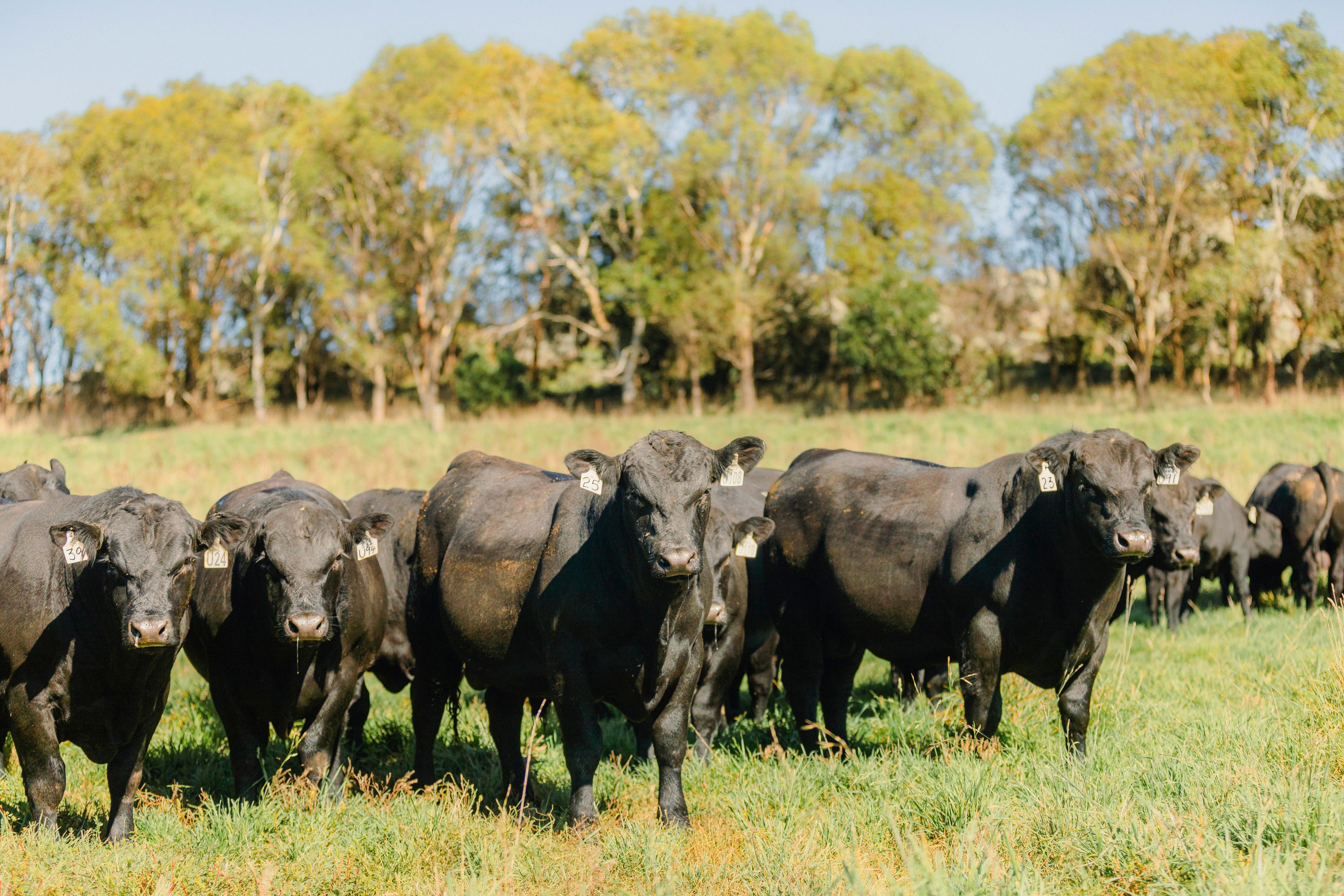
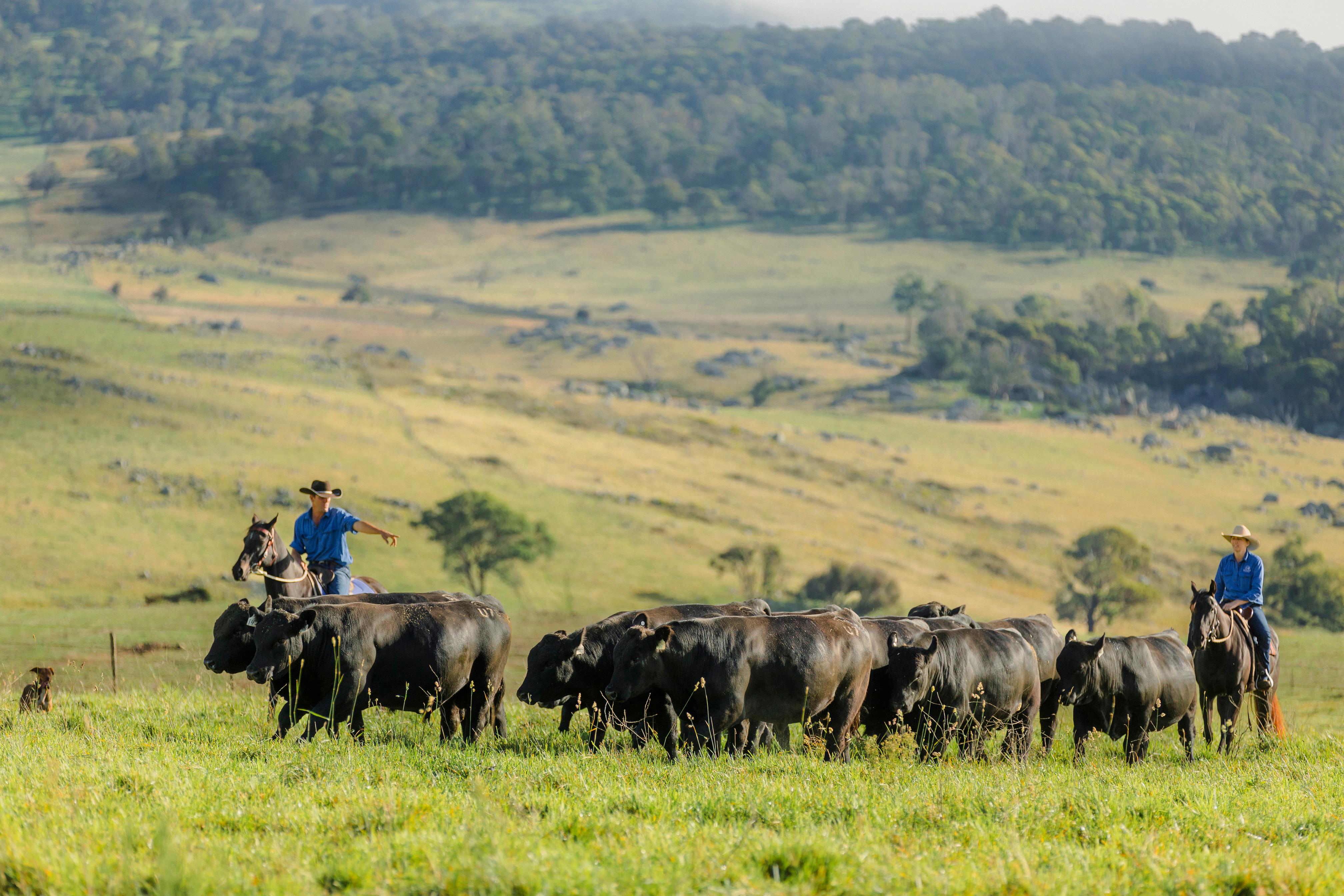
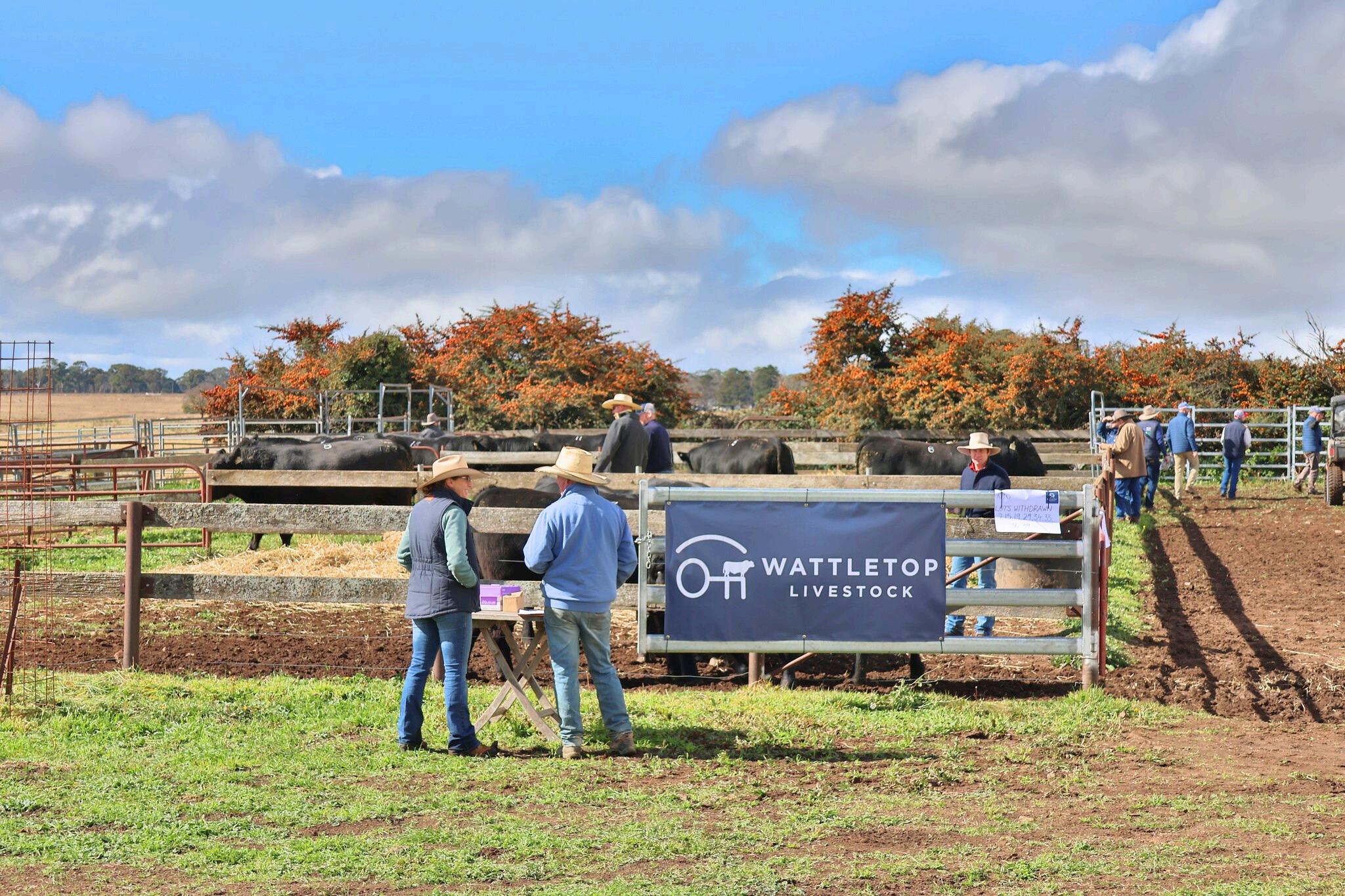


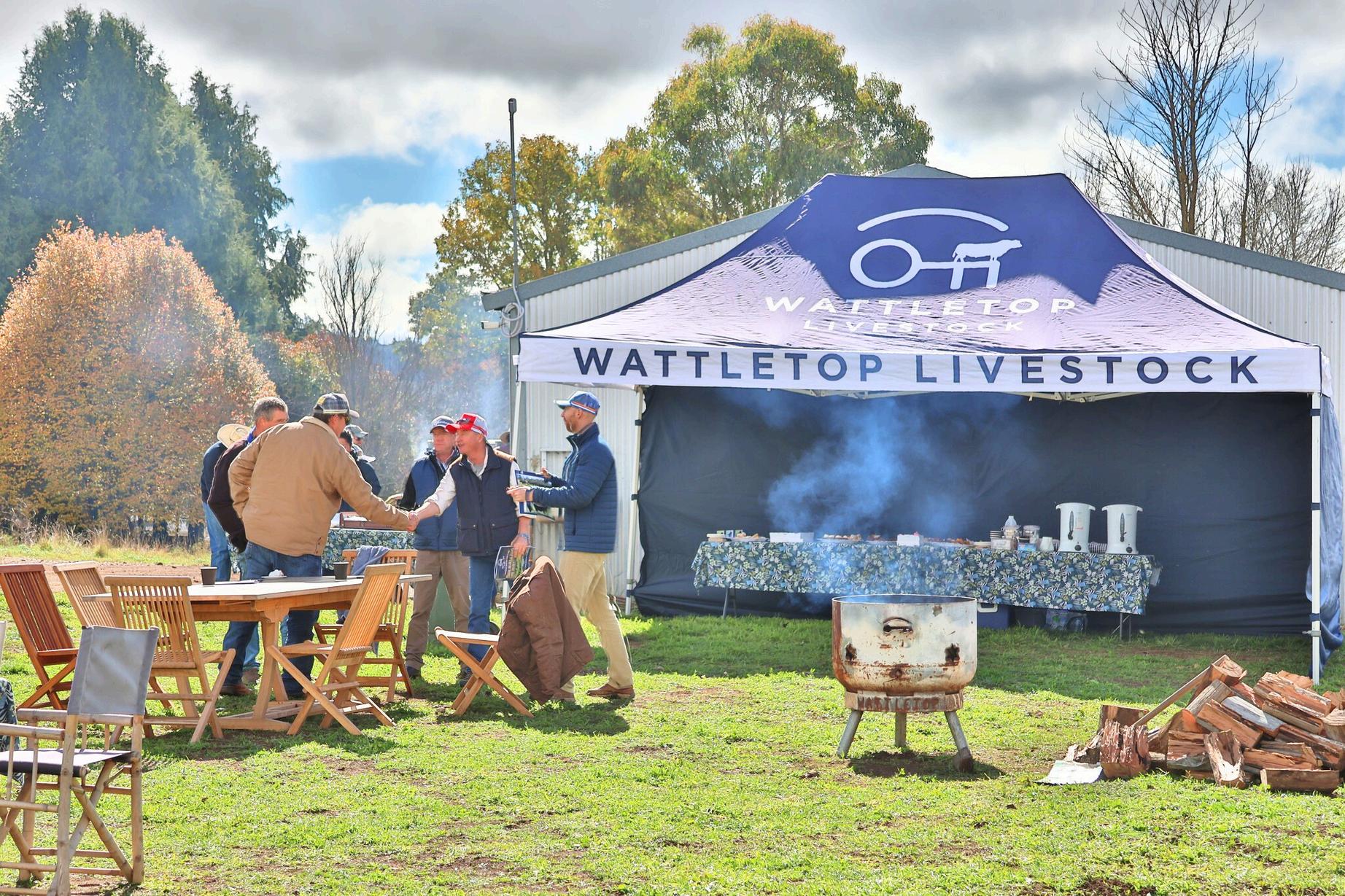

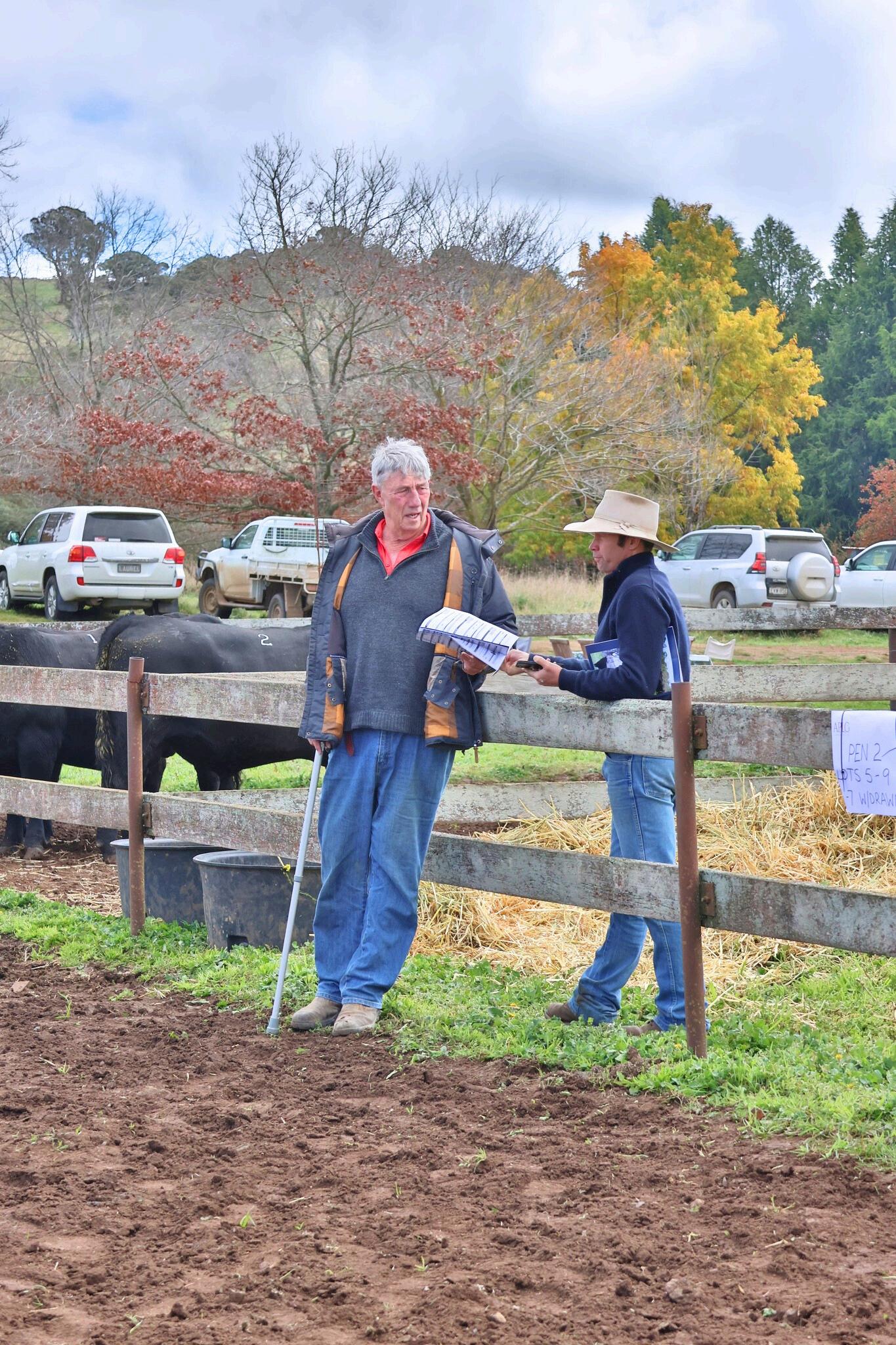
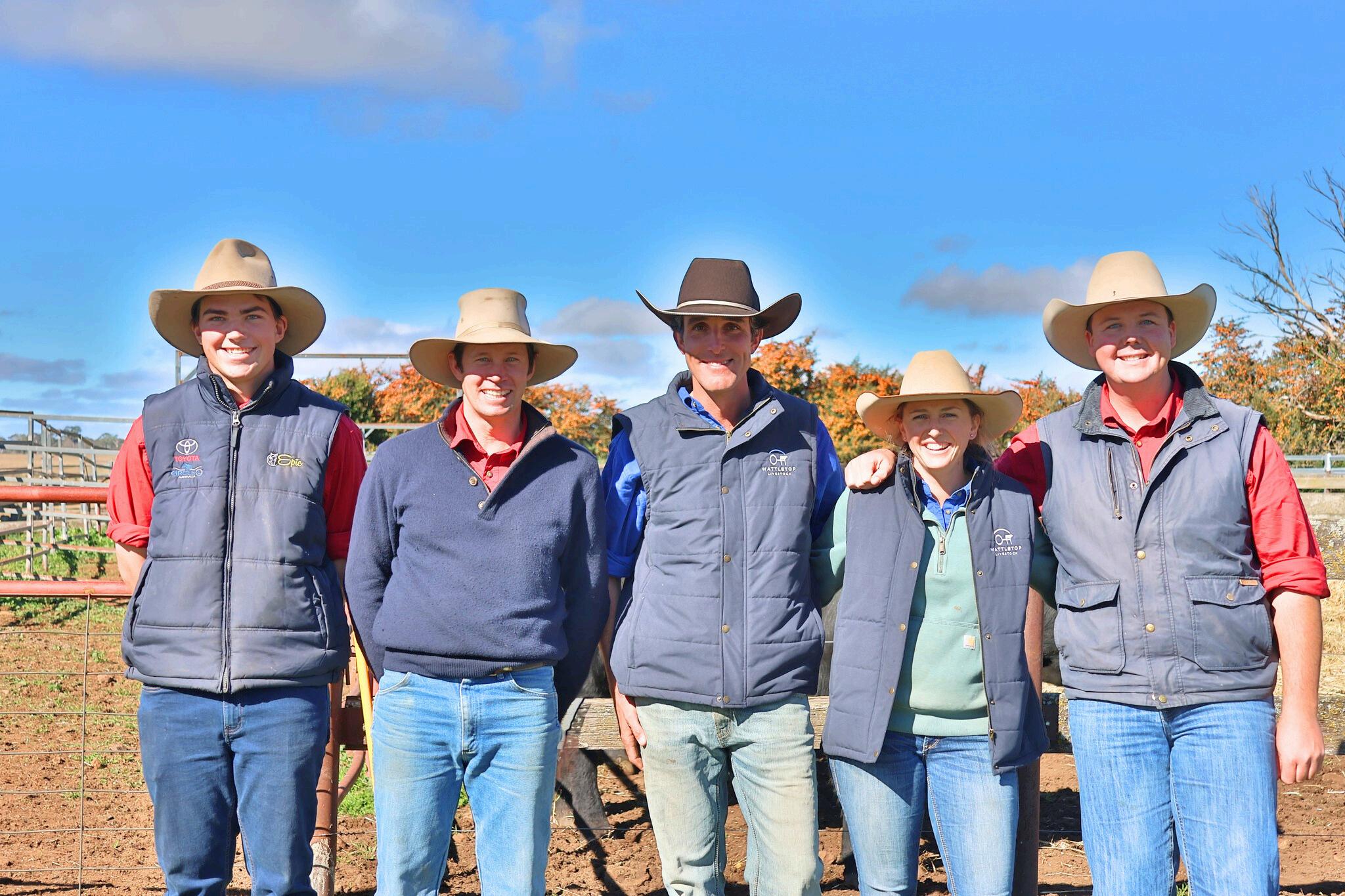
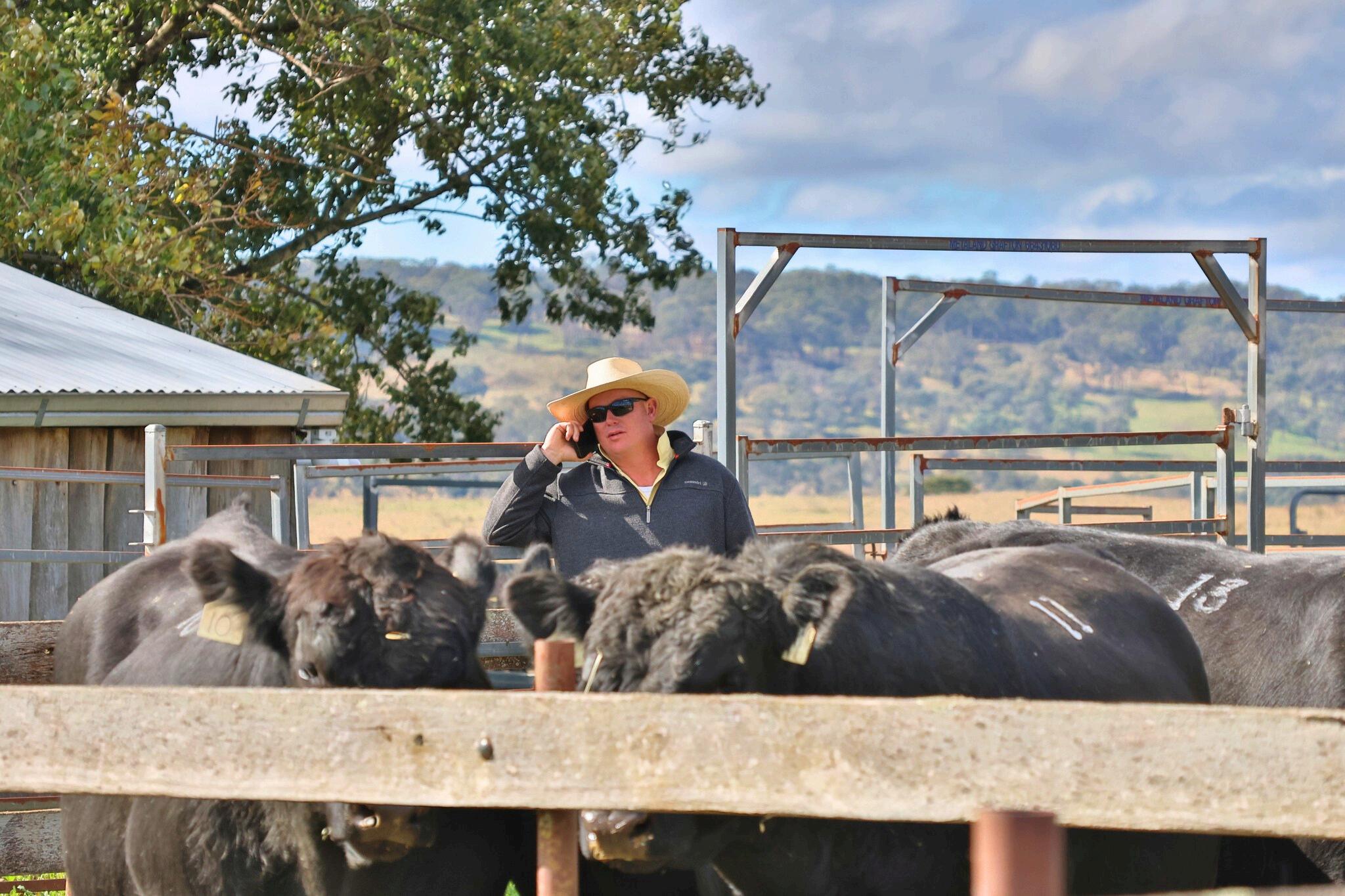




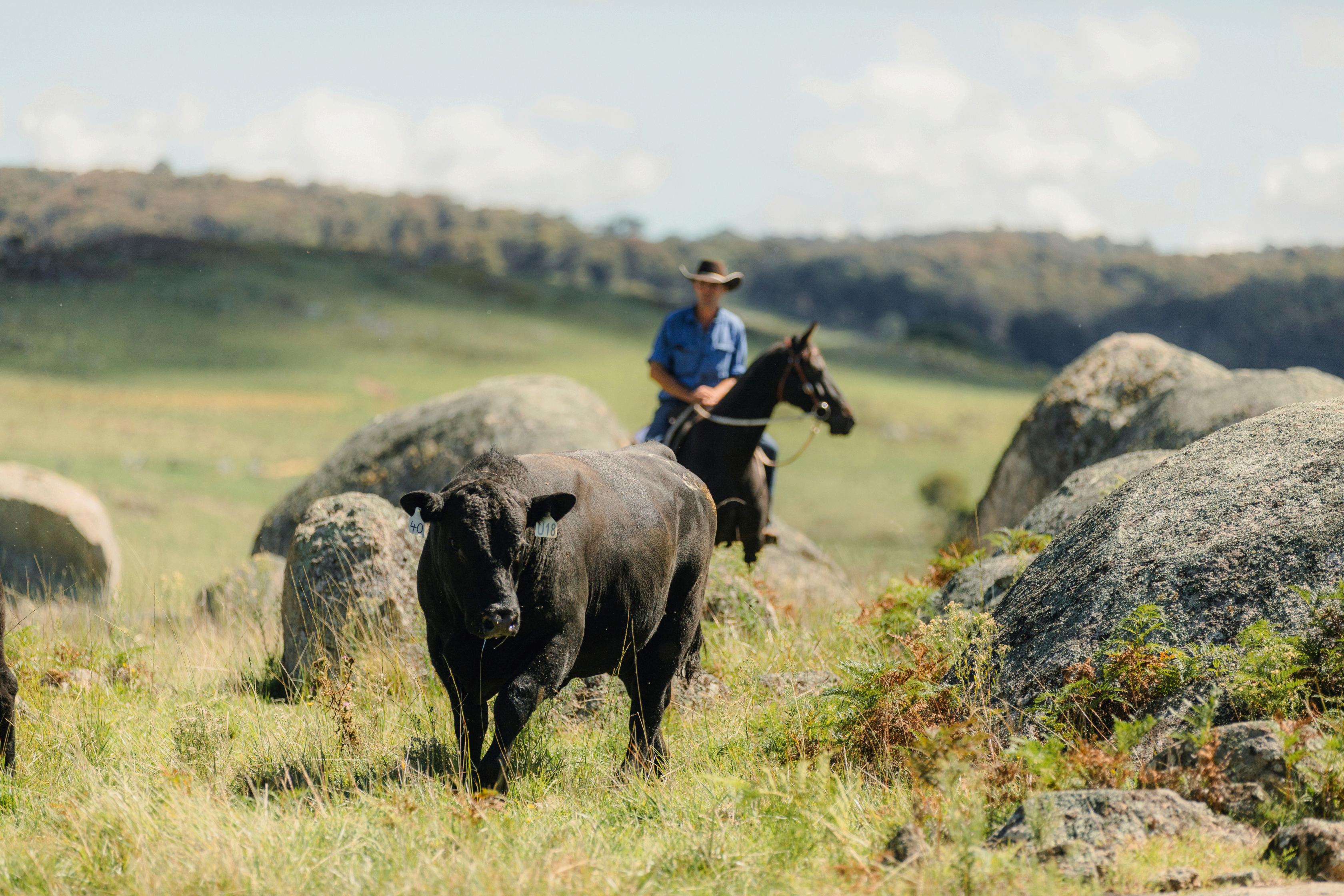
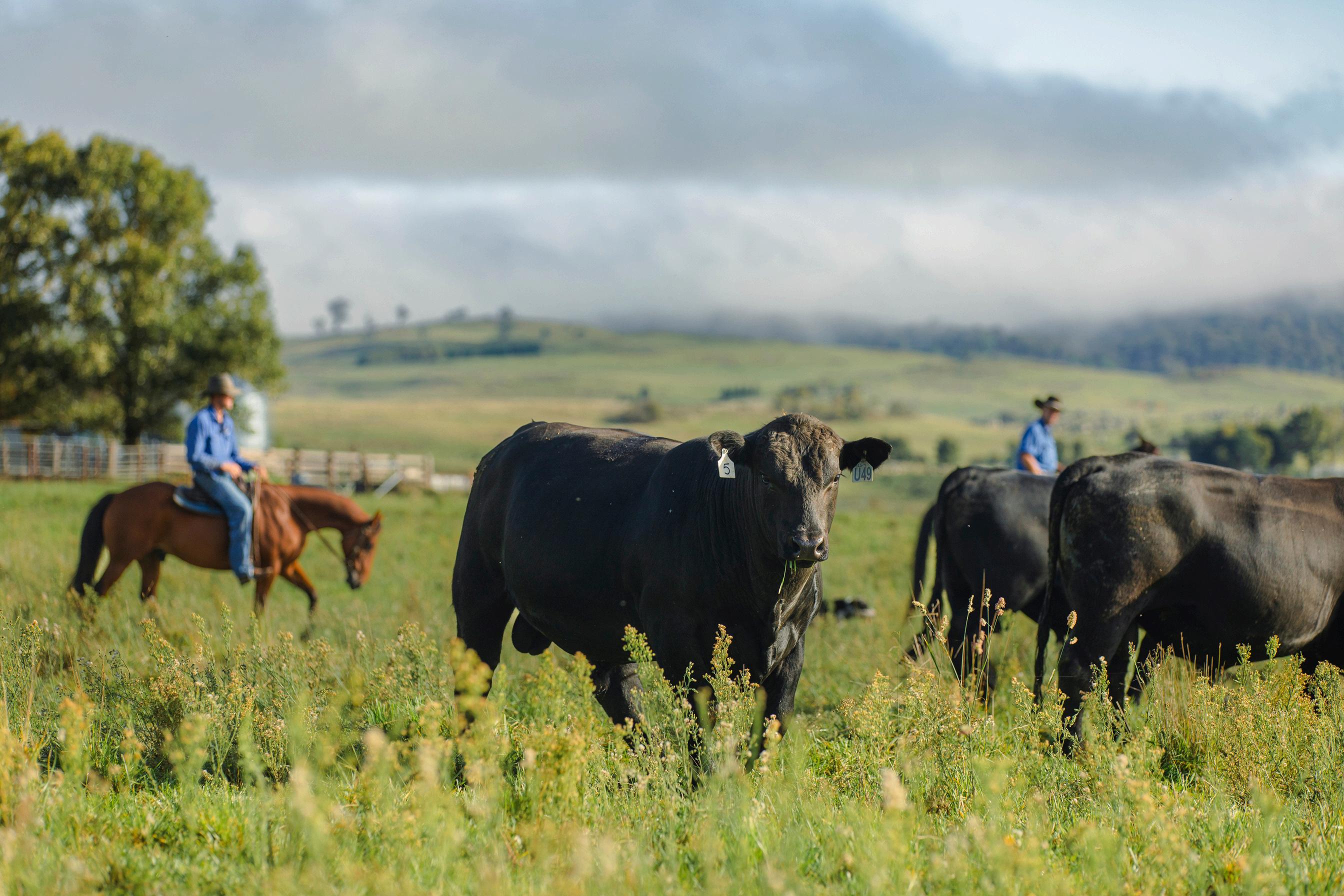
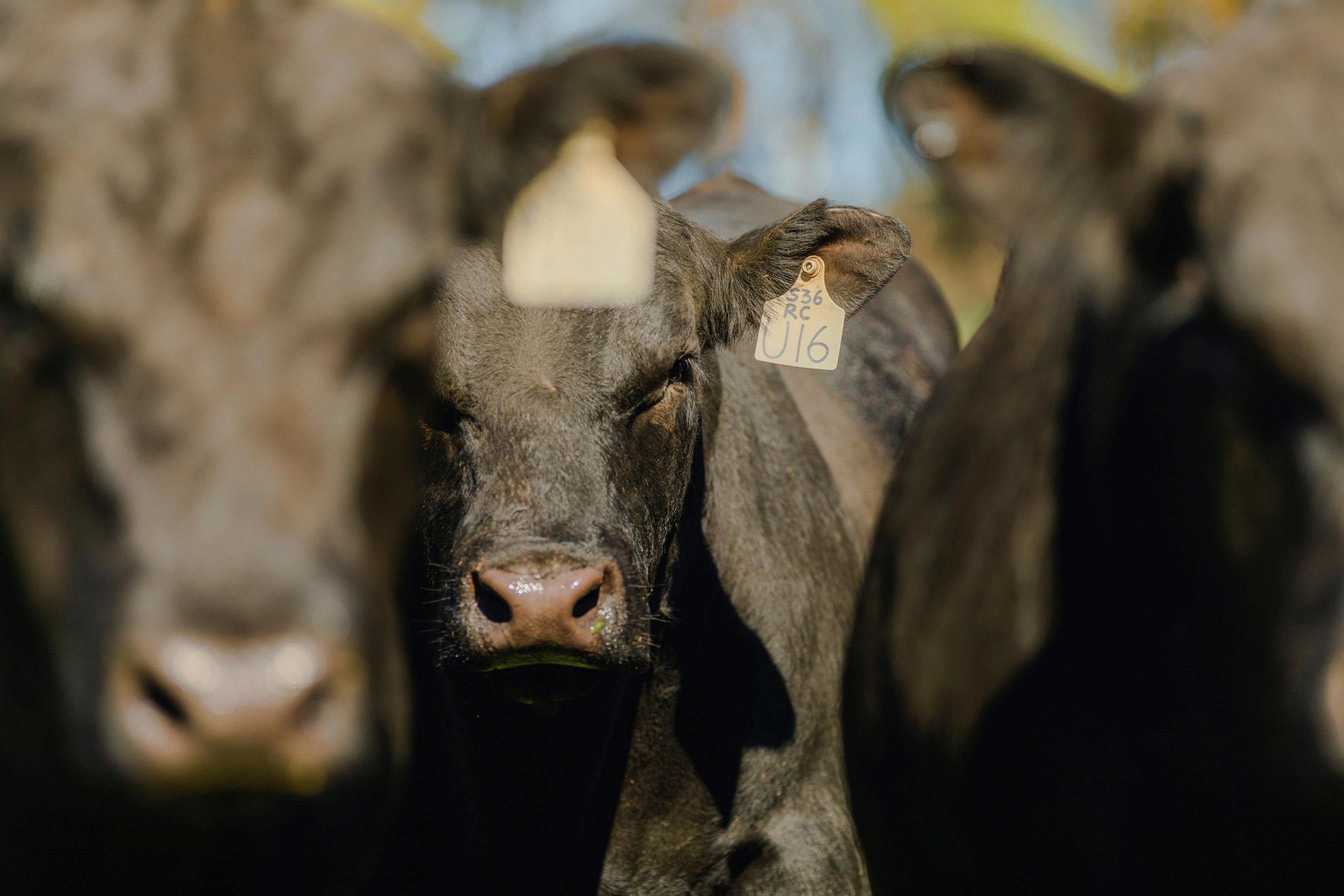
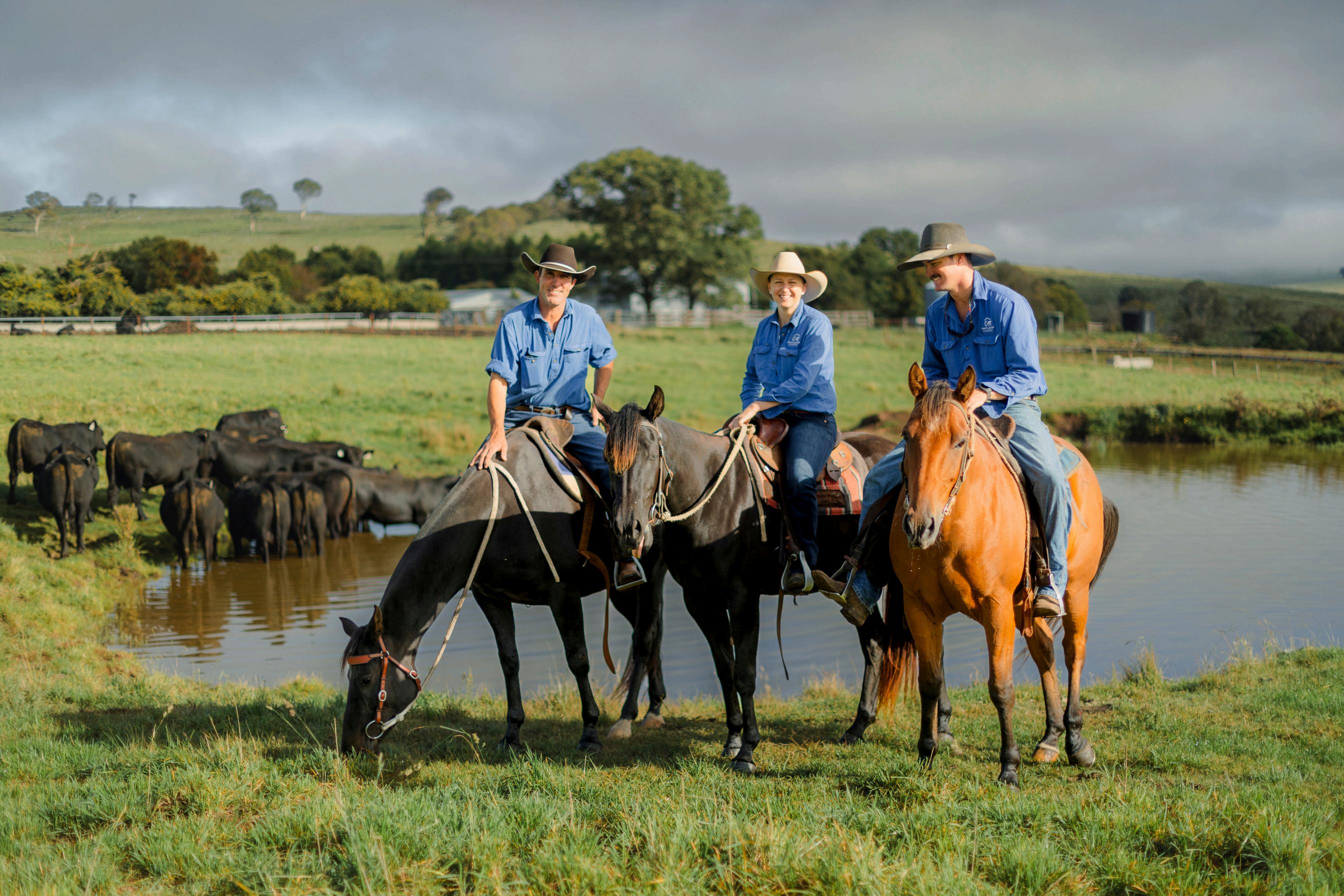
CLUNIE RANGE NAOMI M516# CLUNIE RANGE NAOMI H5#
URONG K578#
BOOROOMOOKA URONG F542#
ENHANCESV
EXCEED 3223PV WATTLETOP
RITA 2618#
FRANKLIN G188SV
DESIGNER C16#
URONG K578#
URONG F542#
RANGE NAOMI M516#
CLUNIE RANGE NAOMI H5#
CLUNIE RANGE NAOMI M516# CLUNIE RANGE NAOMI H5#
KNOWLA DESIGNER L21SV KNOWLA DESIGNER C16#
ENHANCESV
EXCEED 3223PV
RITA 2618#
FRANKLIN M377PV
USUAL P564SV

30% OF THE PROCEEDS OF LOT 33 WILL GO TO THE FOLLOWING CHARITIES 15% 15% 15% 15%

LoveYourSisterhasraised$20 million for Cancer research since 2012. Started by Samuel Johnson, he dedicated a unicycleridearoundAustraliato his sister Connie who passed awayfrombreastcancer.

Angel Flight provides transport for Rural patients to big cities formedicaltreatment. Jesswas lucky to benefit from their serviceafterhersurgery.



